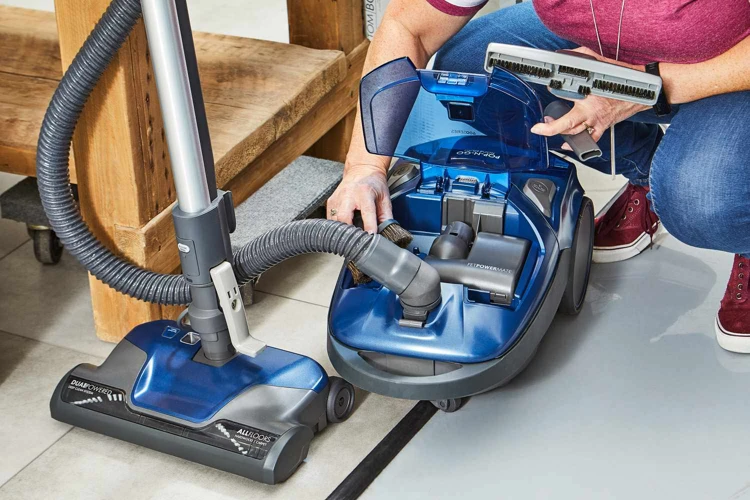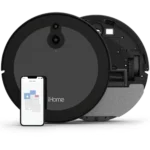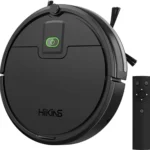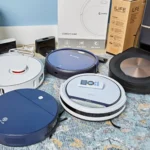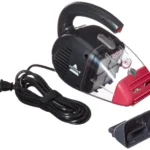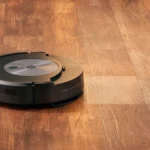Are you tired of finding pet hair all around your house? It seems like no matter how much you clean, there’s always more fur to deal with. One solution to this problem is investing in a vacuum cleaner specifically designed for pet hair removal. However, with so many options available on the market, it can be difficult to know where to start.
The key factor in determining the effectiveness of a pet hair vacuum cleaner is its suction power. But how do you know which suction power is right for your needs? In this article, we’ll explore the importance of suction power for pet hair removal and the factors to consider when choosing the perfect suction power for your vacuum. By the end, you’ll have all the knowledge you need to make an informed decision and say goodbye to pet hair for good.
Why Suction Power is Important for Pet Hair Removal
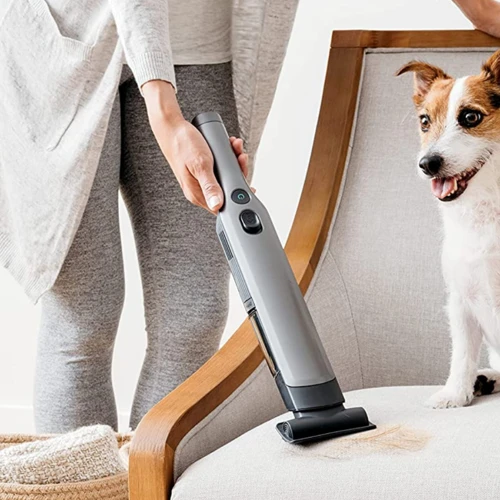
If you’re a pet owner, you know how challenging it can be to remove pet hair from your floors, furniture, and carpets. Having a vacuum cleaner with strong suction power is essential for effective pet hair removal, as it helps to lift and remove pet hair from surfaces. Without strong suction power, pet hair can remain embedded in your carpets, making it difficult to remove even with manual cleaning. Selecting a vacuum with the right suction power is crucial in making pet hair removal effortless and stress-free. In the following sections, we will discuss the importance of suction power and factors to consider when choosing suction power for your pet hair vacuum cleaner.
Understanding Pet Hair
Pet hair is a common issue for pet owners, and it can be difficult to remove from carpets, furniture, and floors. Understanding the intricacies of pet hair can help in choosing the right vacuum cleaner with suitable suction power for the job.
Pet hair is composed of:
| Keratin: | Just like human hair, pet hair is made of keratin. This protein is the main building block of hair, and it provides strength and structure. |
| Pigment: | Pet hair contains pigments that give it color, just like human hair. The color of the hair may depend on the breed. |
| Oil: | Pet hair contains sebum, an oily substance that helps to protect the hair and skin. However, excessive oil can cause pet hair to clump and stick to surfaces. |
Pet hair can be a source of allergens and cause respiratory issues, especially in sensitive individuals. It’s important to keep pet hair under control with regular vacuuming.
If you have pets, you’ll need a vacuum cleaner with appropriate suction power to remove pet hair effectively. However, before choosing the right vacuum, you should also consider factors such as pet hair type, surface type, and vacuum type.
Smart vacuums designed for pet hair might be a good option, as they offer advanced features such as tangle-free brushrolls, powerful suction technology, and HEPA filters that trap allergens. However, it’s important to avoid common mistakes when using vacuum cleaners for pet hair, such as using the wrong attachments, ignoring corners, and neglecting to clean the filters.
Choosing a vacuum with a HEPA filter is crucial for capturing pet dander and airborne allergens, promoting a healthier household. Pet owners can benefit from HEPA filters in vacuums.
Taking into account these factors can help pet owners choose the right vacuum cleaner for their needs and keep their homes free from pet hair and dander.
Importance of Suction Power
Suction power is the most important factor to consider when choosing a vacuum cleaner for pet hair removal. It determines the ability of the vacuum cleaner to remove pet hair, dirt, and debris from various surfaces. The higher the suction power, the more efficient the vacuum cleaner is at removing pet hair.
Suction power is measured in terms of air watts, which refers to the amount of air volume and speed generated by the motor. The higher the air watts, the more powerful the suction is. The suction power is also influenced by the vacuum cleaner’s design, the type of filter used, and airflow efficiency.
A vacuum cleaner with low suction power may not be effective in removing pet hair from carpets, upholstery, and hard floors. It will require multiple passes, and some pet hair may be left behind. On the other hand, a vacuum cleaner with high suction power may be too strong and cause damage to delicate surfaces such as curtains and rugs.
Therefore, it is important to choose the right suction power based on your needs and the surfaces you will be cleaning. This will ensure that you get the most efficient and effective cleaning without damaging your surfaces or leaving any pet hair behind.
To understand the ideal suction power for pet hair removal, we need to consider various factors such as the pet hair type, surface type, frequency of cleaning, and vacuum type. We will discuss these factors in detail in the next section of the article.
It’s important that pet owners choose a vacuum cleaner that is specifically designed for pet hair removal. We have an informative article that talks about the mistakes pet owners make when buying a smart vacuum cleaner for pet hair. Check out
common mistakes to avoid before you make your purchase. Some vacuum cleaners come with features like a tangle-free brushroll for better pet hair removal, and you can read more about this in our article about
tangle-free brushrolls for pet hair.
Factors to Consider When Choosing Suction Power
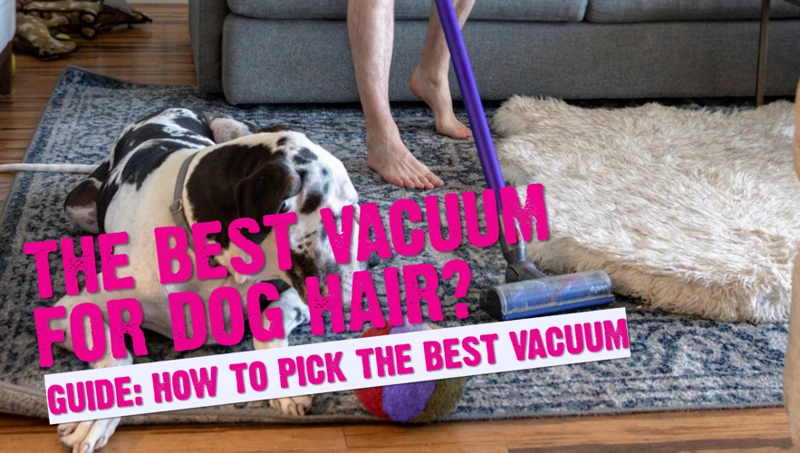
When it comes to finding the perfect suction power for your pet hair vacuum cleaner, there are several factors to consider before making a decision. Not all vacuums are created equal, and finding the right one for your specific needs requires a bit of thought and research. Understanding your pet’s hair type, the surfaces you’ll be cleaning, and how often you’ll be using your vacuum can all impact your decision. Additionally, the type of vacuum you choose can also play a role in determining the suction power you’ll need. Consider all of these factors carefully before making a purchase to ensure you choose a vacuum that will effectively remove pet hair from your home. For those looking for a more advanced option, check out our guide on the top smart vacuums for pet owners.
Pet Hair Type
When it comes to choosing the perfect suction power for your pet hair vacuum cleaner, you must first consider the type of pet hair you’re dealing with. Different pets shed different hair types, and the thickness of the hair will affect the suction power required to remove it. The texture of the hair will also make a difference in determining the suction power of your vacuum cleaner. Here are some important considerations regarding pet hair type.
| Pet Hair Type | Suction Power Required |
|---|---|
| Short Hair | Low to Medium Suction Power |
| Long Hair | Medium to High Suction Power |
| Thick Hair | High Suction Power |
| Curly Hair | Medium to High Suction Power |
| Fine Hair | Low Suction Power |
For short hair breeds, such as Beagles and Boxers, low to medium suction power is usually enough to remove their hair. On the other hand, breeds with long hair like Collies and Sheepdogs require medium to high suction power to get rid of their thick and long hair entirely. Thick haired breeds like Golden Retrievers and Huskies, require high suction power because their hair is often highly dense and heavy. Similarly, curly haired breeds like Poodles and Bichon Frises also require medium to high suction power as their curls can be tricky to vacuum.
Lastly, fine haired breeds like Chihuahuas and Italian Greyhounds require low suction power as fine hair is less dense and less heavy than other hair types. Too much suction power can cause the hair to scatter, making it harder to clean up. When selecting the suction power for your pet hair vacuum cleaner, you need to consider the texture and length of your pet’s hair.
Surface Type
When selecting the perfect suction power for your pet hair vacuum cleaner, it’s crucial to consider the surface type of your home. Different surface types require varying degrees of suction power to effectively remove pet hair. Below are some important factors to consider when choosing the suction power for your specific surface type:
- Carpeted floors: Carpeted floors tend to trap pet hair more easily, making them a little more challenging to clean. For carpets, you’ll need a vacuum cleaner with enough suction power to lift pet hair from deep within the carpet fibers. Ideally, you should aim for a vacuum with at least 200 AW suction power or more, which is enough to dislodge any lodged pet hair in your carpet.
- Hardwood floors: Hardwood floors are much easier to clean than carpeted floors since pet hair is more visible on them. To avoid scratching your hardwood floors during cleaning, you’ll need a vacuum with suction power between 150 and 200 AW. Additionally, you might want to consider a vacuum cleaner with a hard floor attachment that can effectively remove pet hair without scratching your floors.
- Tiled floors: Tiled floors are the easiest to clean when it comes to pet hair. You should be able to get by with a vacuum cleaner that has suction power between 100 and 150 AW. However, you need to be extra careful with tiled floors since pet hair can easily accumulate in corners and hidden areas.
- Upholstered surfaces: Upholstered surfaces like sofas and curtains require suction power that’s gentle enough not to damage the fabrics while still being effective in removing pet hair. Look for a vacuum cleaner with suction power around 100 AW, and ensure it has an upholstery tool that helps remove pet hair from your upholstered surfaces without snagging on the fabric fibers.
By understanding the required suction power for your specific surface type, you’ll be able to choose a vacuum cleaner that works best for your home’s cleaning needs.
Frequency of Cleaning
Finding the Right Suction Power Based on Frequency of Cleaning
One of the most important factors to consider when choosing the perfect suction power for your pet hair vacuum cleaner is the frequency of cleaning. This refers to how often you clean your home or the area where your pets spend most of their time.
Determining the frequency of your cleaning is crucial because it can affect the amount of pet hair accumulated in your home. For example, if you have a dog or a cat that sheds a lot, you may need to clean your home more frequently to prevent the build-up of pet hair. On the other hand, if your pet doesn’t shed as much, you may not need to clean your home as often.
To help you determine the right suction power based on your frequency of cleaning, refer to the following table:
| Frequency of Cleaning | Suggested Suction Power |
|---|---|
| Every Day | High |
| Every Other Day | Medium-High |
| Twice a Week | Medium |
| Once a Week | Low-Medium |
| Less Than Once a Week | Low |
Keep in mind that this table is just a general guide. Your pet’s shedding habits and your living environment may require different cleaning frequencies and suction power settings. When in doubt, it’s always best to choose a vacuum cleaner with multiple suction power modes so you can adjust accordingly.
By finding the right suction power based on the frequency of cleaning, you can ensure that your vacuum cleaner effectively picks up pet hair and other dirt and debris to keep your home clean and comfortable for both you and your furry friends.
Vacuum Type
When it comes to vacuum cleaners, there are different types available in the market. Each type has its own unique characteristics and features that make it suitable for specific cleaning purposes. The type of vacuum cleaner you use can affect the suction power and ultimately, the effectiveness of pet hair removal. Let’s take a closer look at different vacuum types and how they influence suction power and pet hair removal.
First, there is upright vacuums. These vacuums are the most common type of vacuum cleaner used in households. They have a brush bar located at the bottom, which helps to agitate the carpet fibers, making it easier to pick up debris and pet hair. Upright vacuums are known for their high suction power, which makes them a great option for pet hair removal.
The second type of vacuum cleaner is canister vacuums. These vacuums have the motor and dustbin contained in a separate canister unit, which is connected to a long wand and hose. Canister vacuums are generally lightweight and versatile, making them easy to move around furniture and other obstacles. They are ideal for cleaning stairs, upholstery, and hard-to-reach areas. However, canister vacuums are usually not as strong as upright vacuums when it comes to suction power, so you need to carefully choose the right type if pet hair removal is your top priority.
Next, we have stick vacuums. These vacuums are lightweight and easy to maneuver, making them ideal for quick cleaning jobs. They are typically cordless and have a short battery life. Stick vacuums come with a brush bar at the bottom, which helps to agitate dust and pet hair, but they are not usually as strong as upright vacuums in terms of suction power.
Last but not least, there are robot vacuums. These vacuums are a relatively new addition to the market and are equipped with sensors and advanced algorithms that allow them to navigate around your home and clean up pet hair and debris. Robot vacuums are convenient since they can work autonomously, but they are not always as powerful as the other types of vacuum cleaners.
The type of vacuum cleaner you choose depends on your specific cleaning needs and priorities. However, when it comes to pet hair removal, stick with vacuum types that have high suction power, such as upright vacuums or canister vacuums, to ensure that you can pick up as much pet hair as possible.
How to Choose the Right Suction Power for Your Vacuum
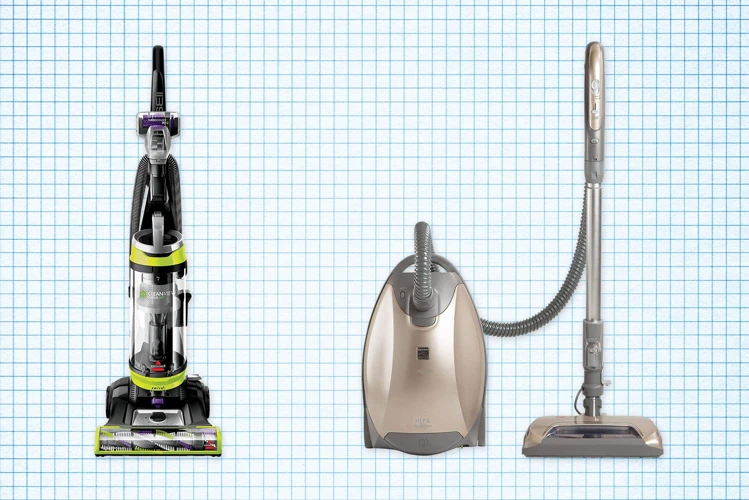
Choosing the right suction power for your pet hair vacuum cleaner can be a daunting task, as there are several factors to consider, including the type of pet hair you are dealing with, the surface you are cleaning, and the frequency of cleaning. However, with a little knowledge and guidance, you can easily determine the perfect suction power for your vacuum that will effectively remove pet hair from your home. In this section of the article, we’ll guide you through the different suction powers available and help you determine the best one for your specific needs.
Low Suction Power
When it comes to choosing the perfect suction power for your pet hair vacuum cleaner, there are several factors to consider. One of the key factors is the level of suction power that you need for effective pet hair removal. Depending on your particular cleaning needs, you may require a vacuum cleaner with low, medium, or high suction power.
Low suction power: A vacuum cleaner with low suction power is suitable for light-duty cleaning tasks such as removing pet hair from smooth surfaces like hardwood floors or low-pile carpets. Low suction power is generally gentler on delicate surfaces and is also quieter than higher suction power models.
Here are some of the benefits and drawbacks of using a vacuum cleaner with low suction power for pet hair removal:
| Benefits | Drawbacks |
|---|---|
| Less likely to cause damage to delicate surfaces | May not be effective on dense or high-pile carpets |
| More affordable than higher suction power models | May require more passes to remove all the pet hair |
| Quieter operation | May not be ideal for heavy-duty cleaning tasks |
If you have pets with fine or short hair, or you only need to remove a small amount of pet hair from your floors, a vacuum cleaner with low suction power may be a good choice for you. Just be aware that it may not be as effective on dense or high-pile carpets, and you may need to make more passes to remove all the pet hair. Additionally, if you have pets that shed heavily or you need to clean a large area, a vacuum cleaner with low suction power may not be powerful enough to meet your needs.
Medium Suction Power
When it comes to choosing the suction power for your pet hair vacuum cleaner, medium suction power can be a good choice. It provides a balance between powerful suction and gentleness on delicate surfaces. Here are some of the characteristics and benefits of medium suction power:
| Characteristics | Benefits |
|---|---|
| Moderate suction power | It can pick up small to medium-sized pet hair without damaging surfaces. |
| Suitable for most floor types | It can be used on carpets, hardwood floors, and tiles without causing scratches or other damages. |
| Can be used on a regular basis | It is ideal for households with pets that shed frequently and require regular cleaning. |
| Works well with different vacuum types | It can be applied to upright vacuums, canister vacuums or robot vacuums. |
Medium suction power is a great option for pet owners looking for a versatile vacuum cleaner that can handle different types of furniture and carpeting. It is not too harsh on fragile surfaces such as area rugs and upholstery, nor is it too weak to remove pet hair from dense carpets or mats.
In addition to customizing the suction power to suit your pet hair cleaning needs, it is also recommended to use the right attachments and accessories as well. For example, a motorized brushroll attachment can help agitate pet hair and dust, while a crevice tool can get into tight areas where pet hair tends to accumulate.
Medium suction power can be a happy medium between too much and too little suction power, providing effective cleaning without risking damage to delicate surfaces. Whether you have long-haired or short-haired pets, choosing the right vacuum suction power can make a big difference in how clean your home looks and feels.
High Suction Power
When it comes to pet hair removal, high suction power can be a game-changer. High suction power vacuums can pick up deep, embedded pet hair from carpets and upholstery, leaving your home looking and feeling clean again. However, not all high suction power vacuums are created equal. It’s important to consider a few key factors before choosing a vacuum with high suction power.
First and foremost, you’ll want to consider the type of pet hair you’re dealing with. If your pets have fine hair, you may not need the highest suction power available. However, if your pets have thick, coarse hair or shed excessively, a vacuum with high suction power is likely your best bet. High suction power is especially important if you have multiple pets in the home, as there will naturally be more hair to pick up.
Another factor to consider is the surface type you’ll be cleaning. High suction power vacuums can be too powerful for some delicate surfaces, such as certain types of hardwood flooring or antique rugs. In these cases, you may want to opt for a vacuum with adjustable suction power or a vacuum specifically designed for delicate surfaces.
If you’ve determined that a high suction power vacuum is right for your pet hair removal needs, it’s important to choose the right vacuum for your home. Here are a few options to consider:
| Vacuum Model | Suction Power (in Watts) | Recommended Surface Types | Additional Features |
|---|---|---|---|
| Shark Navigator Lift-Away Professional | 1200 | Carpet, hardwood, tile | Detachable canister, HEPA filter |
| Dyson Cyclone V10 Absolute | 151 Air Watts | Carpet, hardwood, tile | Cordless, multiple attachments |
| Bissell PowerEdge Pet Hardwood Floor Corded Vacuum | 6 Amps | Hardwood, tile, low-pile carpet | V-shaped design for pet hair |
It’s important to note that while a high suction power vacuum can be highly effective for pet hair removal, it’s not the only factor to consider. The vacuum’s filtration system, brush roll, and other features will also come into play. It’s important to choose a vacuum with high suction power that also suits your specific needs and preferences.
Choosing a vacuum with high suction power can make a big difference when it comes to pet hair removal. By considering factors such as pet hair type and surface type, and choosing the right vacuum for your home, you can enjoy a cleaner living space and a happier, healthier pet.
Multiple Suction Modes
When it comes to choosing the right suction power for your pet hair vacuum cleaner, having multiple suction modes can be incredibly helpful. This feature allows you to customize the suction power based on the specific cleaning needs of your home.
Low Suction Mode: This mode is ideal for delicate surfaces and furniture. It prevents damage to surfaces like curtains and blinds, as well as delicate fabrics on furniture.
Medium Suction Mode: This mode is suitable for everyday cleaning and can remove pet hair from carpets and upholstery. It can also handle small debris like crumbs and dust.
High Suction Mode: This mode is best for tough cleaning jobs like deeply embedded pet hair and dirt. It is also great for cleaning thick carpet and hard floors.
Having multiple suction modes allows you to adjust the suction power based on your cleaning needs, which can help prolong the life of your vacuum cleaner. It also ensures that you can effectively clean all areas of your home without damaging surfaces or furniture.
It is important to note that not all vacuum cleaners come with multiple suction modes, so make sure to check if this feature is available before making a purchase. If you have a pet that sheds heavily, investing in a vacuum cleaner with multiple suction modes can make all the difference in keeping your home clean and your furniture intact.
Tips on Using Your Vacuum Cleaner for Pet Hair Removal
Keeping your home clean with pets can be a real challenge, especially because pet hair seems to get everywhere. To make the task of pet hair removal easier, it’s important to choose the right vacuum cleaner with the perfect suction power, as we previously discussed. But even with the right vacuum, there are some tips you should keep in mind to make sure you are efficiently removing pet hair:
1. Vacuum regularly
One of the best things you can do to keep pet hair under control is to vacuum frequently. Regular vacuuming will not only remove pet hair, but also allergens and other debris that can accumulate on your floors and carpets. Depending on the level of shedding, you may need to vacuum every day or every other day.
2. Use the right attachment
Using the right vacuum attachment can make a huge difference in how effectively pet hair is removed. Some vacuum cleaners come with attachments specifically designed for pet hair removal, such as turbo brushes, motorized brushes, or a pet hair tool. Make sure to use these tools for best results.
3. Change your vacuum filters often
Vacuum filters play an important role in trapping pet hair and other debris, but when they get too clogged, they can actually decrease suction power. Make sure to change or clean your filters according to the manufacturer’s instructions to keep your vacuum running smoothly and efficiently.
4. Vacuum in different directions
Vacuuming in different directions, such as north to south and east to west, can help loosen up and remove pet hair embedded in carpets and other surfaces. This will also help ensure that you are reaching all the nooks and corners where pet hair tends to accumulate.
5. Don’t forget to vacuum upholstery and pet bedding
Pet hair can accumulate on furniture and bedding just as easily as it can on floors and carpets. Be sure to use the appropriate attachments to vacuum upholstery, curtains, and pet beds to keep these surfaces clean and hair-free.
By following these tips, you can make sure that you are getting the most out of your vacuum cleaner when it comes to pet hair removal. Remember to vacuum regularly, use the right attachment, change filters often, vacuum in different directions, and don’t forget to tackle upholstery and pet bedding. With these tricks and the right suction power, your home will be pet hair-free in no time.
Conclusion
In conclusion, choosing the right suction power for your pet hair vacuum cleaner is crucial for effective pet hair removal. Understanding the type of pet hair and surfaces you will be cleaning, as well as the frequency of cleaning and the type of vacuum, are all important factors to consider.
Remember that choosing the highest suction power may not always be the best option. It can be damaging to certain surfaces or make the vacuum difficult to maneuver. Low suction power may not be effective enough to pick up stubborn pet hair.
It is important to find a balance and choose the appropriate suction power for your specific needs. Consider investing in a vacuum with multiple suction modes to provide more flexibility.
Once you have chosen the appropriate suction power, remember to use the vacuum properly to maximize your pet hair removal. Make sure to clean or replace filters and empty the dustbin regularly to avoid clogged suction.
Overall, with the right suction power and proper usage, you can achieve a pet hair-free home and enjoy spending time with your furry friends without worrying about constant cleaning.
Frequently Asked Questions
What are the common types of pet hair?
The most common types of pet hair are long, coarse, and fine hair as well as fur, dander, and shed skin.
What makes suction power important for pet hair vacuums?
Suction power is important because it allows vacuums to pick up pet hair from surfaces effectively, ensuring a thorough clean.
What surfaces are pet hair vacuums suitable for?
Pet hair vacuums are typically suitable for all kinds of surfaces including carpets, hardwood floors, tiles, and upholstery.
How often should I clean my pet hair vacuum?
It’s recommended that you clean your pet hair vacuum after every use and replace filters periodically according to the manufacturer’s instructions.
What are the different types of pet hair vacuums?
There are various types of pet hair vacuums including upright vacuums, canister vacuums, handheld vacuums, and robotic vacuums.
How powerful should my pet hair vacuum be for long-haired pets?
If you have long-haired pets, it’s recommended that your pet hair vacuum has a powerful suction of at least 180 Air Watts for effective cleaning.
Are bagged or bagless pet hair vacuums better?
Both bagged and bagless pet hair vacuums have their pros and cons. Bagged vacuums contain allergens better, while bagless vacuums are more convenient and easier to maintain.
Can pet hair vacuums be used for cleaning cars?
Yes, pet hair vacuums can be used to clean car interiors. Look for handheld or portable vacuums with narrow nozzles and crevice tools for best results.
Can pet hair vacuums help with pet allergies?
Yes, pet hair vacuums can help reduce pet allergy symptoms by removing allergens from surfaces and the air. Look for vacuums with HEPA filters for optimal results.
Can pet hair vacuums be used for cleaning pet stains?
No, pet hair vacuums are not designed for cleaning pet stains. Instead, use a pet stain remover or carpet cleaner specifically designed for pet messes.
